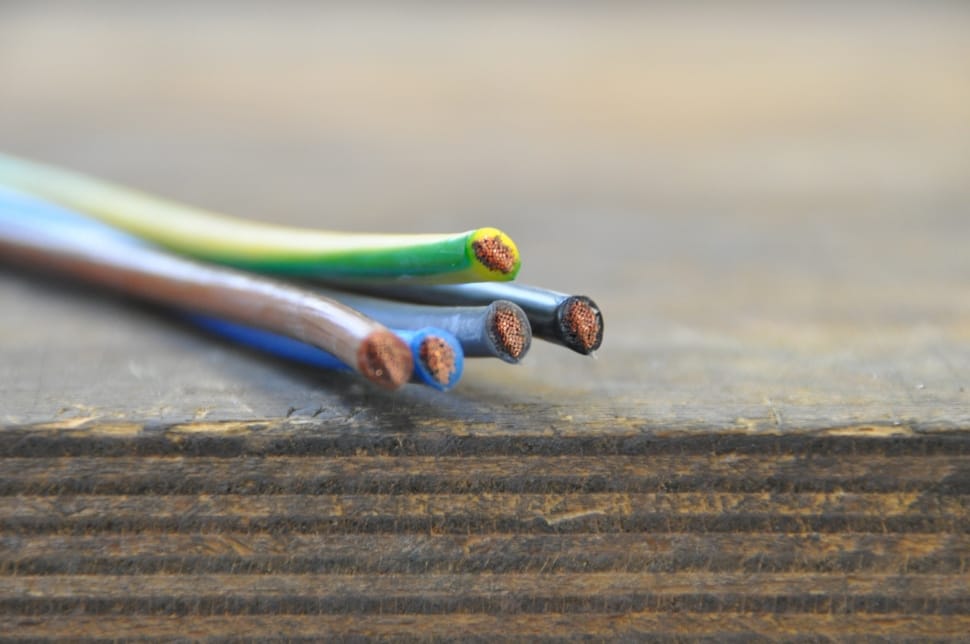What Is Electric Cable Methods For Inexperienced persons
페이지 정보

본문
Your telephone only uses two wires (one pair), but dating back to the '60s it has been a widespread convention to wire homes for two separate telephone lines. This property, called ampacity (made from the two words "ampere" and "capacity"), defines the current capacity of a conductor based on the heat that is generated owing to electrical current, the structure, and material of the conductor, and ambient temperature. It is used to define the current capacity of standard conductors (wires) in different working conditions for safe operation. These cables come in different sizes with one, two, and three conductors and various insulation materials. It is very important to know the resistance of electric conductors when they are used in electric circuits. Where t2 is the temperature at which we need to know the specific resistance ρ2, t1 is the temperature at which the value is known (ρ1), α1 is the temperature coefficient at t1.
Resistivity: Same as specific resistance: the electric resistance of a specific size (based on the measurement system) of a metal or material. In the above example, the number in the second bracket can be used for conversion between values of specific resistance in the metric system and in the imperial system. The specific resistance is 6.31× larger. In the US customary system, ρ is defined by the resistance of 1 foot of metal with a cross-section of 1 circular mil (CM). We should calculate the resistance of a foot long (0.3048 m) of the cable with a diameter of 1 mil (1/1000 inch). The unit of measurement for ρ, therefore, is ohm-circular mil per foot (Ω.CM/ft). Thus, the specific resistance of copper in the imperial system is 10.11 Ω.CM/ft. The specific resistance of copper in the imperial system is 10.11 Ω.CM/ft. The value ρ is called the specific resistance or resistivity of a substance.

This decision was never accepted by those in the industry who knew that de Forest was nothing more than a backroom tinkerer who had serendipitously stumbled upon the beneficial effects of what he called the Audion tube. The connector used for modern telephones is often called RJ-11, although that term is not exactly correct in a pedantic way that rarely matters. Instead, modern splice cabinets are larger ground-level pedestals, usually a good 4-8 feet wide with large double doors. The first sector of the electric utility industry to be deregulated was the network of high-voltage transmission wires, which were designed to make bulk power transfers, over relatively short distances, from large power-generating plants to the cities and towns where the power was needed. All wires running inside this shielding layer will be to a large extent decoupled from external electrical fields, particularly if the shield is connected to a point of constant voltage, such as earth or ground.
Stress cones provide an extra layer of safety at the end of electrical terminations. What Is the Purpose of a Stress Cone on an Electrical Termination? When you think of an electrical cord planner, you do not have to merely consider your living room. Think about your garage as well as all of the devices as well as supplies that you have stuffed therein. This implies that ρ does not have a constant value. Where R1 is the known value of the resistance at t1 and R2 is the resistance at t2. So, for example, if the length of a wire doubles, its resistance doubles, but if cross section doubles, what is electric cable resistance halves. The resistance of a piece of wire 10 ft long is 100 mΩ. The principal electrical property of a piece of metal is the resistance R that it shows to the flow of electrical current. Loudspeakers also use a varying current in a coil to cause vibrations to occur in a diaphragm which enable the electronic currents to be converted into sounds. Ampacity is determined based on the heat generated in a conductor due to the current through it.
- 이전글Unveiling the Casino Site Experience 24.08.29
- 다음글Betxhub247 ID - Betxhub247 Master ID -Betxhub247 New ID - Betxhub247Login 24.08.29
댓글목록
등록된 댓글이 없습니다.

